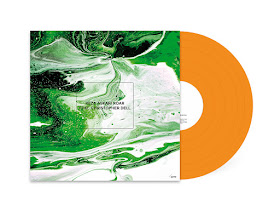By
Sammy SteinI wrote a piece for Reader’s Digest a year or two ago titled “10 Female
Musicians You Should Get To Know”. One of these was Fay Victor, who
coincidentally was interviewed for FJC’s Sunday interview in August. Her
voice is an instrument of delight. So to find Victor featured on this album
in my inbox from Perelman was a joy. Perelman has collaborated with only
two vocalists, Flora Purim, and Iva Bittova. Here, the mastery of Victor
pushes Perelman to explore even deeper, the wealth of musical discovery, he
has made – and it is easy to believe he also makes a few new connections.
The album also has the supremely creative rhythm section of Joe Morris and
Ramon Lopez. Victor has worked with Anthony Braxton, Randy Weston, Wadado
Leo Smith, Nicole Mitchell, Daniel Carter, and more and her ‘Freesong’
approach has shown her as an individualistic, creative vocalist. Joe Morris
brings his blend of African and jazz-rooted music to his bass playing and
Ramon Lopez is a jazz drummer familiar to many for his multicultural
cadences.
To find four musicians of such calibre on one recording is a rarity. To
discover they blend and merge so well, with Victor’s vocals adding nuances
almost impossible on any other instrument, is a delight. Messa Di Voce
(which means placing the voice in Italian) could not be a more appropriate
title because Victor understands how to use her voice as an instrument in
as precise a manner as anyone plucking or bowing a string or striking a
key. And the other musicians understand how to utilise the depth of
Victor’s voice to the best, allowing her to express its full range and
versatility.
Perelman, ever the organic grower musically, has placed these three
musicians together and cast his net across using his sax lines to link, and
his musical suggestions to inspire. The notable similarity between the
range of the female voice and that of the upper sax registers is clear
along with the possibilities for complimentary phrases and contrast. At
times on Track I-One it is possible to imagine the sax and voice as one and
at others, the point where they diverge and separate is difficult to
discern. Victor’s pitching is profound and vocalising as she is against
Perelman who, as ever, introduces unexpected musical dalliances into the
melodic lines, veering off along pathways of his invention, and leaving
Victor to follow, is a feat most vocalists might not relish. Victor,
however, is no ordinary vocalist and she counters and enhances Perelman’s
musical deviations, at times re-taking the creative mantle, causing
Perelman to backtrack and re-engage. In the middle section, there is a
lovely, phrased section where Victor hums a tune that Perelman picks up and
distorts – creating an adaptive, creative response. Lopez sets up furious
rhythmic passages in the closing stages as Victor flows freely, allowing
her impressive voice its full range.
The tracks follow much the same pattern, but there is never a sense of
repetition or over-familiarity. Perelman is pushed by the vocals and
introduces sounds he has not played for some time, such as on track I-Two,
where he blasts and growls rhythmic patterns while Victor pushes out
equally extreme vocalisations, creating a depth of intuitive sound, which
feels like two musical titans leaning into each other at times, and
slightly demonic at others.
There are some beautifully worked sections, like the swinging phrasing
briefly held by the sax on track I-Three and the guitar phrases on that
track. Familiar jazz elements ooze over trickling, intricate vocals. The
opening on track I-Four sounds big-band with the vocals exuding emotion.
The structure of this eighteen-plus minute track is exceptional, and the
listener is never lost, yet somehow catapulted from one extreme effect to
another. Many tracks make the most of the rhythmic potential and
adaptability of the voice, with Victor offering her punctuation and
percussive elements at times counteracting the rhythm section of Lopez and
Morris. II-Three is an impressive blend of culturally diverse rhythms and
vocalisations.
As ever, the numbering of the tracks is a mystery with the album being
divided into two parts, but the tracks are also numbered in numerical order
from 1 to 9 and vary in length from just over five and a half to over
eighteen minutes.
Gathering his components around him Perelman, the constant gardener of
music, plants elements to create colours, patterns, and striking contrasts,
that work to create a glorious, colourful, emotionally packed musical
landscape for the listener. Given Perelman’s kinaesthesia, it is no wonder
he can weave intricate patterns of depth and warmth, using subtle hues and
big, striking episodes of intensity.
Four stellar musicians, with Perelman as a guide but not leader in the
‘follow me’ sense, but more in the ‘let’s see what works if I do this’
sense and with heavy attention paid to the incredible instrument of
Victor’s voice, this is simply beautiful.





























